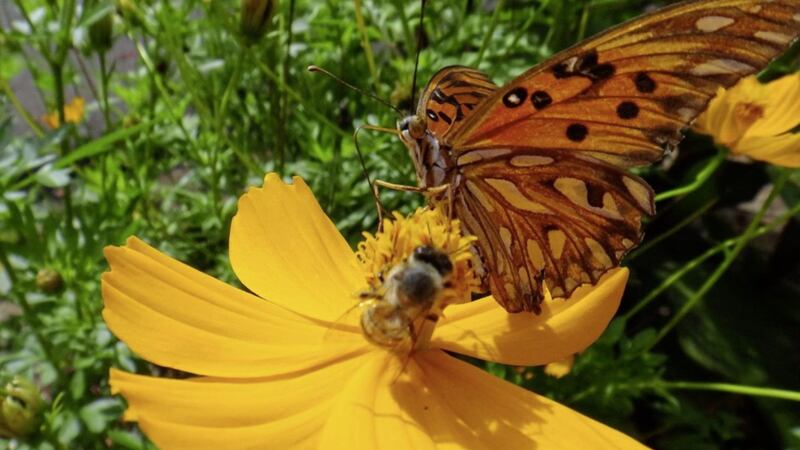FOR some time gardeners have been alert to the threat to Ireland’s bee population and have chosen plants accordingly.
However, municipal authorities and many of those involved in so-called tidy towns initiatives have been slower to respond, continuing to employ planting schemes that aim to please the human eye, with little consideration for insect life.
According to Peter Cuthbert, a horticultural consultant based in the Republic, traditional summer bedding plants, such as geraniums, petunias, begonias and Busy Lizzie, may produce beautiful blooms in an array of colours, but they do not provide food for pollinators.
“They have been bred for showiness, at the expense of pollen and nectar,” he writes on the website of the All-Ireland Pollinator Plan, a cross-border initiative aiming to create an Ireland where pollinators can survive and thrive.
Having researched alternative bedding plants over the past five years, Peter recommends two in particular for attracting a range of pollinating insects, including bees, hoverflies and butterflies – namely, bidens and bacopa.
Bidens, sometimes called beggar's ticks or bur marigold, is a member of the Asteraceae (daisy) family with a trailing habit. In its annual and short-lived perennial form it has strong colour throughout summer. Yellow flowers are best for insects, according to Peter.
Bacopa also has a trailing habit, meaning it's suitable for hanging baskets, and bears loads of white flowers. It comes in range of varieties that have ‘snow’ somewhere in the name but it is also available in pink and blue.
The importance of gardening with bees in mind is also to the fore in the National Trust’s call for the public to ‘go wild’ for nature this summer in a bid to protect pollinating insects such as butterflies, moths and bees.
The ‘Under our Wing’ campaign will launch at the forthcoming Balmoral Show.
The trust, which is a partner in the All-Ireland Pollinator Plan, is encouraging visitors to the show to create their own wildflower space and is giving away 2,500 packets of wildflower seeds for people to sow in their garden or window boxes at home.
According to National Trust wildlife adviser Melina Quinn several high-profile scientific reports, based on long-term surveys, show catastrophic declines or what is termed ‘Insectageddon’.
"Insects are critical to the survival of the rest of the living world; they pollinate our crops and wild plants, control pests, decompose and recycle organic matter and provide food for other animals," she says.
Over recent years, the trust has created 15 extra hectares of wildflower meadows and verges in Belfast, Fermanagh, Cushendun in Co Antrim, and Castle Ward in Co Down, bringing the total meadows to more than 40 hectares – the equivalent of 80 football pitches.
As well as meadows, the charity manages wildflower-rich dune systems, peatlands, woodlands, wetlands, gardens, hedgerows and orchards – all of them important for the survival of pollinators like bees, moths and butterflies.
Melina says that if each of these seed packets given away at the Balmoral Show is successfully sown and flowers, there would be more than 40,000 square feet of extra wildflowers this summer.
"Wildflowers are not simply pretty to look at but make a big contribution to the health of other wildlife too," she says. "They attract a huge variety and number of pollinating insects including butterflies, hoverflies and bees."
Other steps the trust recommends to help nature are planting pollinator-friendly flowers, trees and shrubs in your garden, planters or window boxes. You can also make simple bug hotels to attract insects and leave part of your lawn uncut and see what wildflowers appear.








